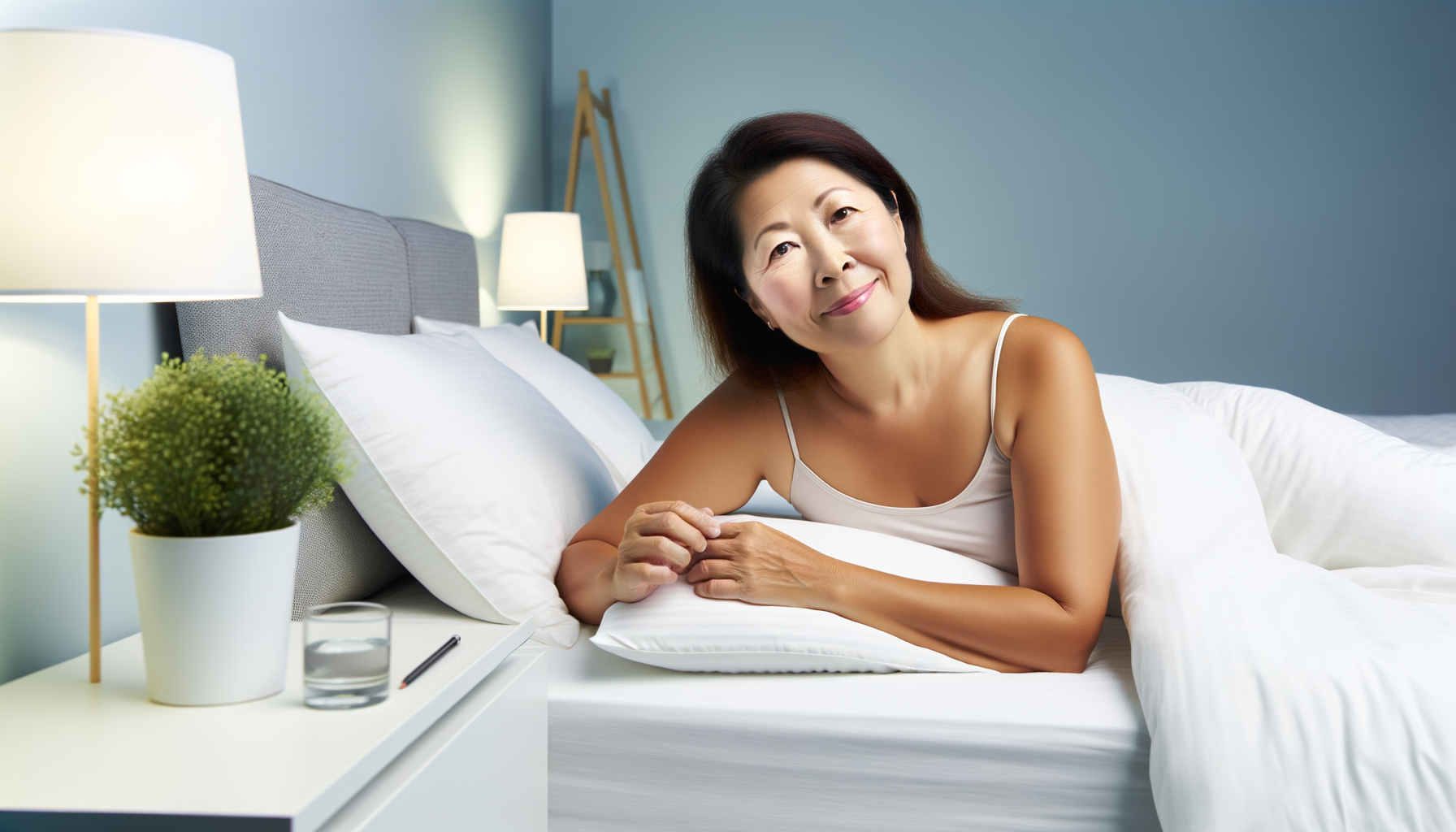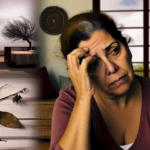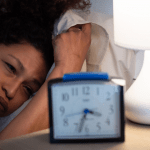Sleep apnea is a common sleep disorder characterized by repeated interruptions in breathing during sleep. These interruptions, known as apneas, can lead to a decrease in blood oxygen levels and fragmented sleep. There are three main types of sleep apnea: obstructive, central, and mixed, with obstructive sleep apnea (OSA) being the most prevalent. OSA occurs when the muscles in the throat fail to keep the airway open, despite efforts to breathe.
Prevalence of Sleep Apnea in Menopausal Women
The prevalence of sleep apnea in menopausal women is notably higher than in premenopausal women. Factors contributing to this increased risk include hormonal changes, weight gain, and the distribution of body fat associated with menopause. Studies indicate that menopausal status significantly impacts the likelihood of developing sleep apnea, with postmenopausal women being at a greater risk. This risk is further compounded by age and body mass index (BMI).
Purpose of the Article
The purpose of this article is to explore the intricate relationship between menopause and sleep apnea. It aims to shed light on how hormonal changes during menopause can affect sleep patterns and respiratory function, potentially leading to sleep-disordered breathing. The article will also discuss the signs and symptoms of sleep apnea in menopausal women, how to differentiate them from other menopausal changes, and the importance of seeking medical attention. Additionally, it will cover natural management strategies, when to consult healthcare providers, and the significance of monitoring and follow-up. Ultimately, the article seeks to provide a comprehensive understanding of menopause-related sleep apnea and to emphasize the need for awareness and appropriate management of this condition.
Understanding Sleep Apnea
Definition and Types of Sleep Apnea
Sleep apnea is a sleep-related breathing disorder characterized by repeated interruptions in breathing during sleep. These interruptions, known as apneas, are caused by the partial or complete collapse of the airway, leading to a temporary cessation of breathing. There are three main types of sleep apnea:
- Obstructive Sleep Apnea (OSA): The most common form, caused by a physical blockage of the upper airway.
- Central Sleep Apnea (CSA): Occurs when the brain fails to signal the muscles that control breathing.
- Mixed Sleep Apnea: A combination of both obstructive and central sleep apnea.
Symptoms and Diagnosis
The symptoms of sleep apnea can be subtle or pronounced, and they often include:
- Loud snoring
- Episodes of breathing cessation witnessed by another person
- Abrupt awakenings accompanied by shortness of breath
- Awakening with a dry mouth or sore throat
- Morning headache
- Difficulty staying asleep (insomnia)
- Excessive daytime sleepiness (hypersomnia)
- Attention problems and irritability
Diagnosis typically involves an evaluation of medical history, a physical examination, and a sleep study known as polysomnography. This study records various body functions during sleep, including breathing patterns, oxygen levels in the blood, heart rate, and brain waves.
Risk Factors and Causes
Risk factors for sleep apnea include:
- Excess weight: Obesity greatly increases the risk of OSA.
- Neck circumference: A thicker neck may narrow the airway.
- A narrowed airway: Enlarged tonsils or adenoids can block the airway, particularly in children.
- Being male: Men are more likely to have sleep apnea than women, though the risk for women increases after menopause.
- Age: Sleep apnea occurs more frequently in older adults.
- Family history: Having family members with sleep apnea might increase your risk.
- Use of alcohol, sedatives, or tranquilizers: These substances relax the muscles in your throat, which can worsen obstructive sleep apnea.
- Smoking: Smokers are more likely to have obstructive sleep apnea than are people who’ve never smoked.
- Nasal congestion: If you have difficulty breathing through your nose due to an anatomical problem or allergies, you’re more likely to develop obstructive sleep apnea.
Causes of sleep apnea are varied, but for OSA, the most common cause is an obstruction of the airway during sleep, often when the soft tissue in the back of the throat collapses and closes. Central sleep apnea is typically associated with certain medical conditions or the use of certain medications. In both cases, the interruptions in breathing prevent restful sleep and can lead to a host of health issues if left untreated.
The Menopause Connection
Hormonal Changes and Their Impact on Sleep
Menopause is a significant life transition for women, characterized by the cessation of menstruation and a decline in the production of the hormones estrogen and progesterone. These hormonal changes can have a profound impact on sleep quality. Estrogen is known to help maintain the regularity of the sleep cycle and the stability of body temperature, which can affect sleep patterns. Progesterone is associated with promoting sleep and can act as a natural sedative. As levels of these hormones decrease during menopause, women may experience sleep disturbances, including difficulty falling asleep, staying asleep, and achieving deep, restorative sleep. Additionally, menopausal women often report an increase in sleep-disrupting night sweats and hot flashes, which can lead to significant sleep fragmentation.
Research Findings on Menopause and Sleep Apnea
Recent research has highlighted a concerning link between menopause and sleep apnea. Studies indicate that postmenopausal women are two to three times more likely to have sleep apnea compared to premenopausal women. The protective effects of estrogen and progesterone on respiratory function appear to diminish with menopause, leading to an increased risk of developing sleep-disordered breathing conditions such as obstructive sleep apnea (OSA). This increased risk is further compounded by other factors associated with menopause, such as weight gain and changes in fat distribution, which can exacerbate the collapse of the upper airway during sleep.
Estrogen, Progesterone, and Respiratory Function
The relationship between estrogen, progesterone, and respiratory function is complex. Estrogen has been shown to influence the central control of breathing and respiratory muscle function, and it may play a role in protecting the upper airway from collapsing during sleep. Progesterone is a respiratory stimulant that increases the sensitivity of the brain’s carbon dioxide monitoring system and can enhance the drive to breathe. As women transition through menopause, the decline in these hormones can lead to a reduction in upper airway muscle tone and an increase in the likelihood of airway obstruction during sleep. This underscores the importance of recognizing and addressing sleep apnea as a potential health concern for menopausal women.
Signs and Symptoms of Sleep Apnea in Menopausal Women
Common Indicators of Sleep Apnea
Menopausal women may experience a range of symptoms that could indicate the presence of sleep apnea. Loud snoring is often the most noticeable sign, but it is not the only one. Other common indicators include witnessed pauses in breathing during sleep, gasping or choking for air that may awaken the sleeper, morning headaches, daytime sleepiness despite a full night’s sleep, and dry mouth or sore throat upon waking. Additionally, women may experience nighttime sweating, insomnia, and restless sleep, which can all be linked to disrupted breathing patterns.
Differentiating Symptoms from Menopausal Changes
It can be challenging to distinguish between symptoms of menopause and sleep apnea, as they often overlap. For instance, both conditions can lead to insomnia and night sweats. However, certain symptoms are more indicative of sleep apnea, such as snoring, observed apneas, and daytime fatigue that affects concentration and mood. Menopausal changes, on the other hand, are more likely to cause hot flashes, vaginal dryness, and irregular periods. It is important to note that menopause can exacerbate sleep apnea due to the decrease in muscle tone in the airways as estrogen and progesterone levels decline.
When to Seek Medical Attention
Medical attention should be sought if sleep apnea symptoms are persistent and impact daily life. This is particularly important if symptoms include frequent loud snoring, breathing cessation witnessed by another person, gasping or choking at night, or excessive daytime sleepiness that leads to napping or difficulty performing tasks. Additionally, if a woman experiences morning headaches, mood disturbances, or cognitive issues such as memory loss or difficulty concentrating, these could be signs of sleep apnea and warrant a professional evaluation. Early diagnosis and treatment can prevent potential complications associated with sleep apnea, such as cardiovascular issues.
Natural Management of Sleep Apnea
Lifestyle Modifications
Addressing sleep apnea naturally often begins with lifestyle changes that can significantly impact the severity of the condition. Weight management is a critical factor, as excess weight, particularly around the neck, can increase the likelihood of airway obstruction during sleep. A balanced diet and regular exercise can aid in weight loss and improve overall health, potentially reducing sleep apnea episodes.
Another key lifestyle modification is avoiding alcohol and sedatives before bedtime, as these substances can relax the muscles in the throat, increasing the risk of airway collapse. Additionally, smoking cessation is advised, as smoking can increase inflammation and fluid retention in the airway, exacerbating sleep apnea symptoms.
Establishing a consistent sleep schedule and ensuring a sleep-friendly environment can also help. This includes maintaining a cool, dark, and quiet bedroom and avoiding stimulating activities before bedtime, such as using electronic devices or consuming caffeine.
Alternative Remedies and Supplements
Some individuals with sleep apnea may find relief through alternative remedies and supplements. For instance, certain plant-based therapies and herbal supplements like valerian root or lavender are believed to promote relaxation and better sleep, though their direct effects on sleep apnea are less clear.
Supplements such as melatonin may help regulate sleep cycles, particularly for those with disrupted circadian rhythms. However, it’s important to consult with a healthcare provider before starting any supplement regimen, as interactions with other medications or underlying health conditions need to be considered.
Breathing Exercises and Sleep Positioning
Breathing exercises can be an effective way to strengthen the muscles in the airway, which may help reduce sleep apnea symptoms. Practices such as yoga or pranayama that focus on deep breathing can improve respiratory strength and encourage a more stable breathing pattern during sleep.
As for sleep positioning, it’s been observed that sleeping on the back (supine position) can worsen sleep apnea due to gravitational effects on the airway. Encouraging side sleeping can be beneficial, and there are various methods to promote this, such as using a body pillow or wearing a sleep positioning device that prevents rolling onto the back.
Ultimately, while these natural management strategies can be helpful, they may not be sufficient for everyone. Continuous monitoring and consultation with healthcare providers are essential to ensure effective management of sleep apnea.
When to Consult Healthcare Providers
Assessment and Diagnosis
Recognizing the symptoms of sleep apnea in menopausal women is crucial, but self-diagnosis is not recommended. If you experience signs such as snoring, daytime drowsiness, or waking up gasping for air, it’s time to consult a healthcare provider. A thorough assessment by a medical professional, often a sleep specialist, is necessary to distinguish between menopausal symptoms and sleep apnea.
Diagnosis typically involves a sleep study, known as polysomnography, which can be conducted in a sleep disorder center or at home with a portable device. This study measures various body functions during sleep, including breathing patterns, oxygen levels, heart rate, and brain activity. Based on the results, a healthcare provider can determine the presence and severity of sleep apnea.
Treatment Options Beyond Natural Management
While lifestyle changes such as weight management and sleeping on your side can help alleviate mild sleep apnea, more severe cases often require medical intervention. Continuous Positive Airway Pressure (CPAP) machines are a common treatment, delivering air through a mask to keep the airway open during sleep. Other options include oral appliances that adjust the position of the jaw or tongue, and in some cases, surgery may be necessary to remove tissue or correct structural issues in the airway.
It’s important to discuss all available treatment options with your healthcare provider, as some medications and remedies can exacerbate sleep apnea. Hormone replacement therapy (HRT) may also be considered to alleviate menopausal symptoms that could be contributing to sleep disturbances.
Importance of Monitoring and Follow-up
After initiating treatment for sleep apnea, ongoing monitoring is essential to ensure its effectiveness. Follow-up appointments allow healthcare providers to adjust treatment plans as needed and address any new symptoms or concerns. Regular monitoring also helps to prevent the long-term health risks associated with untreated sleep apnea, such as high blood pressure, heart disease, and cognitive impairments.
Menopausal women should maintain open communication with their healthcare providers and report any changes in their symptoms or overall health. By doing so, they can ensure that their sleep apnea treatment remains effective and that their quality of life during menopause is optimized.

Conclusion
The intricate relationship between menopause and sleep apnea is underscored by a multitude of factors that intertwine hormonal changes with sleep physiology. Menopause, a natural biological process, marks the end of a woman’s reproductive years and brings about a decline in estrogen and progesterone levels. This hormonal shift has a profound impact on various aspects of health, including sleep quality and the respiratory system. Sleep apnea, particularly obstructive sleep apnea (OSA), is characterized by repeated episodes of partial or complete upper airway obstruction during sleep, leading to disrupted sleep and potential long-term health consequences.
Research indicates that menopausal women experience an increased prevalence of sleep apnea compared to their premenopausal counterparts. The hormonal changes during menopause, especially the reduction in estrogen and progesterone, are believed to contribute to the increased risk of sleep-disordered breathing. These hormones are known to influence respiratory function and sleep architecture, and their decline can lead to alterations in the upper airway’s structure and control, as well as in the central mechanisms regulating sleep and breathing.
Signs and symptoms of sleep apnea in menopausal women often overlap with those of menopause itself, making diagnosis challenging. Common indicators include habitual snoring, insomnia, nocturnal awakenings, and daytime sleepiness. However, menopausal changes can also mimic or mask these symptoms, necessitating a careful and thorough medical evaluation for accurate diagnosis.
Natural management strategies for sleep apnea in menopausal women encompass lifestyle modifications, such as weight management and positional therapy, as well as alternative remedies and breathing exercises. Nonetheless, the importance of medical intervention cannot be overstated, with continuous positive airway pressure (CPAP) therapy being the cornerstone of treatment for moderate to severe cases.
Final Thoughts on Menopause and Sleep Apnea
Menopause and sleep apnea share a complex bidirectional relationship that affects a significant number of women. Understanding the nuances of how hormonal changes during menopause influence sleep and respiratory function is crucial for healthcare providers. It enables them to offer tailored advice, support, and treatment options to improve the quality of life for menopausal women suffering from sleep apnea.
As research continues to evolve, it is imperative to develop gender-specific screening tools and treatment protocols that address the unique presentation of sleep apnea in menopausal women. Early recognition and intervention are key to mitigating the impact of sleep apnea and associated comorbidities in this population. Ultimately, a multidisciplinary approach involving lifestyle interventions, medical treatment, and continuous monitoring offers the best strategy for managing sleep apnea during menopause.


















